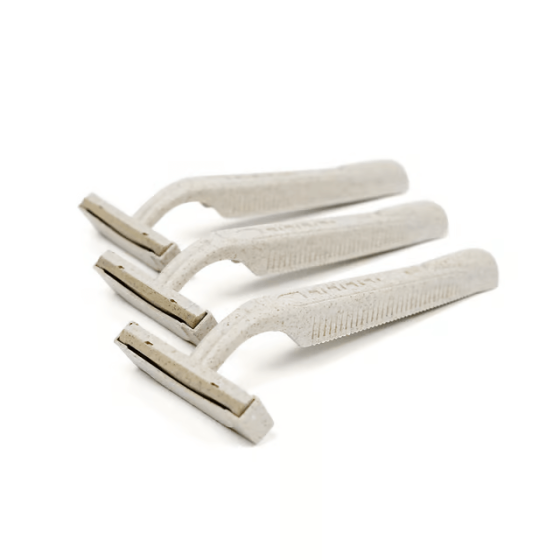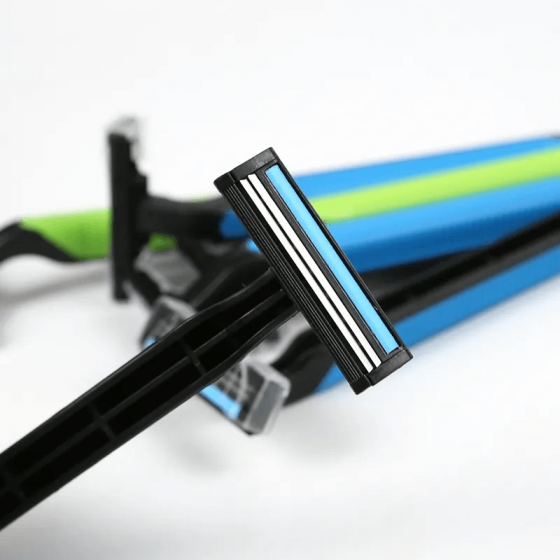Table of Contents
1.Introduction
2.Market Segmentation by Product Type
- Refillable Cartridge Razors
- Disposable Razors
- Electric Razors
- Straight Razors
- Double-Edge Safety Razors
3.Market Segmentation by Tier
- Mass Market
- Mid-Tier Market
- Premium Market
4.Market Segmentation by Sales Channel
- Hypermarkets & Supercenters
- Department Stores
- Convenience Stores
- E-Commerce Platforms
- Other Channels
5.Market Segmentation by Blade Material
- Carbon Steel Blades
- Lame in acciaio inossidabile
6.Market Segmentation by Consumer Demographic
- Male Consumers
- Female Consumers
Conclusion
1. Introduction
The global razor market in 2025 continues to evolve as manufacturers innovate across product design, materials, and distribution. Consumers today demand convenience, performance, and affordability, leading to a multi-layered market segmentation. This report breaks down the razor market into five key dimensions—product type, market tier, sales channel, blade material, and consumer demographic—to provide a comprehensive overview and actionable insights for brands, retailers, and investors.
2. Market Segmentation by Product Type
2.1 Refillable Cartridge Razors
Refillable cartridge razors feature a reusable handle and snap-in disposable blade cartridges, typically housing three to five precision-engineered blades. They combine speed with ease of use, often including lubricating strips and pivoting heads for a close, comfortable shave.
2.2 Disposable Razors

Wheat Straw double edge disposable razors
Disposable razors are all-in-one units made from injection-molded polycarbonate or similar plastics. After their lifespan (usually 3–10 shaves), the entire razor is discarded. Ergonomic, non-slip handles and pre-lubricated blade strips ensure good control and skin protection throughout each shave.
2.3 Electric Razors
Electric razors—either foil (reciprocating blades) or rotary (circular heads)—run on rechargeable batteries or via direct power. They eliminate the need for water, foam, or gels, offering a dry or wet/dry shave. Compact motors drive blades under protective foils or into rotating heads, balancing efficiency with skin comfort.
2.4 Straight Razors
Also known as open-blade razors, straight razors feature a single, full-length blade that folds into the handle. Traditionally made from high-carbon steel or stainless steel, they require skilled use and regular stropping or honing but remain popular among shaving purists for their unmatched closeness and ritualistic appeal.
2.5 Double-Edge Safety Razors

Safety razors use a two-sided, replaceable blade clamped between a top cap and base plate. The head’s guard reduces the risk of cuts while providing a very close shave. Typically forged from low-chromium stainless or special “razor steel,” they are both cost-effective and gentle on the skin, making them a favorite of eco- and budget-minded consumers.
3. Market Segmentation by Tier
3.1 Mass Market
Targeting price-sensitive buyers, the mass market includes economy disposables, entry-level safety razors, and basic straight razors made from standard materials. Popular products include Gillette Vector, Presto, Schick Smx 3, Xtreme 4, and Dorco Fresh Twin.
3.2 Mid-Tier Market
The mid-tier segment features refillable cartridge razors like Gillette Mach 3 and mid-grade safety or straight razors crafted from higher-quality metals. These offerings balance performance and affordability, appealing to consumers upgrading from basic disposables.
3.3 Premium Market
Premium buyers prioritize top-performance and luxury finishes. This segment spans high-end electric shavers, designer safety razors, and advanced cartridge systems. Iconic products include Gillette Fusion ProShield, Above the Tie Windsor polished stainless-steel safety razor, and Philips AquaTouch wet/dry electric shaver.
4. Market Segmentation by Sales Channel
4.1 Hypermarkets & Supercenters
Large self-service outlets offering groceries and household goods, including razors. Hypermarkets span 1,800–6,000 m², while supercenters (hybrid of hypermarket and department store) average around 15,800 m². Major chains include Walmart, Costco, and Carrefour.
4.2 Department Stores
Multi-floor retail venues with dedicated sections for different product categories. Shaving products are typically found in the personal care or men’s grooming sections. Leading department stores include Nordstrom and Hudson’s Bay Company.
4.3 Convenience Stores
Convenience stores, with extended hours and small footprints, stock basic grooming items alongside snacks and beverages. Ideal for on-the-go or emergency purchases of disposables and refill cartridges.
4.4 E-Commerce Platforms
Online retail continues its rapid growth, offering razor subscriptions, exclusive online-only models, and doorstep delivery. Key players are Amazon, Alibaba (Tmall/Taobao), eBay, Rakuten, and specialty grooming e-tailers.
4.5 Other Channels
This category can include salon and barber-shop retail, duty-free travel retail, and workplace vending solutions. These venues often feature professional-grade razors and curated grooming kits.
5. Market Segmentation by Blade Material
5.1 Carbon Steel Blades
Forged from high-carbon steel, these blades are economical and sharpen quickly but are prone to corrosion without proper drying and maintenance.
5.2 Lame in acciaio inossidabile
Alloys of chromium, nickel, and molybdenum deliver long-lasting sharpness and superior rust resistance. Widely used in both disposable cartridges and premium safety razors for their low maintenance and durability.
6. Market Segmentation by Consumer Demographic
6.1 Male Consumers
Mens razors typically feature smaller, square or rectangular heads for precise facial contours. Lubricating strips (aloe or vitamin E) help reduce irritation, while pivoting mechanisms ensure close contact across jawlines and neck.
6.2 Female Consumers
Women’s razors favor elliptical heads and multiple blades to follow curves under arms, legs, and bikini areas. Protective bars and moisturizing strips (often infused with shea butter or botanical oils) deliver a smooth, gentle shave on sensitive skin.
7. Conclusion
The 2025 razor market is a tapestry of innovation and choice, segmented by product type, price tier, distribution channel, blade material, and consumer need. Brands that understand and strategically target each segment—whether through high-tech electric offerings, eco-friendly safety razors, or convenient e-commerce subscriptions—will capture the diverse preferences of modern shaving audiences.
 Xiruiglobal.COM
Xiruiglobal.COM

